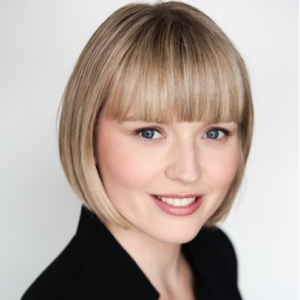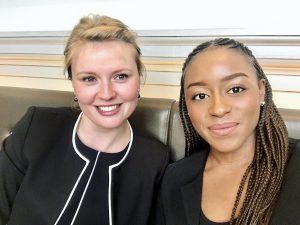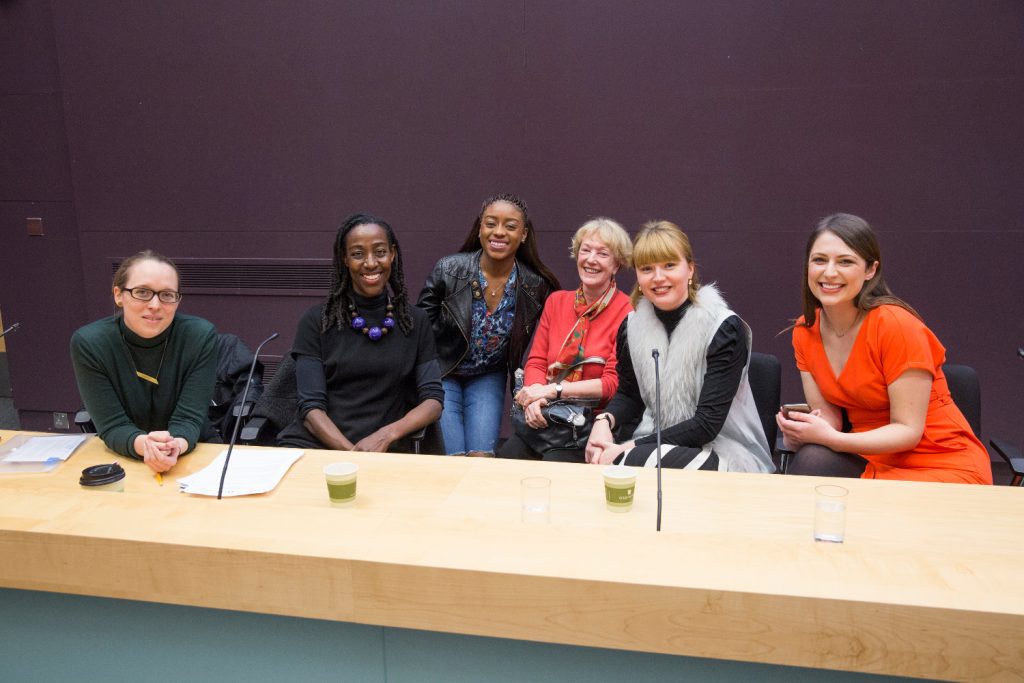Women in Law: What Needs to Change? An Interview with Charlotte Proudman

The issue of gender progression in the legal profession has always been a hot potato, with the noticeable lack of women in senior roles never far from the headlines. While women have seen advances in the workplace over the last forty years, the glass ceiling is yet to be shattered.
So, Post-International Women’s Day, second-year law student, Christianah Babajide, sat down with Human Rights barrister, Charlotte Proudman, to discuss gender inequality in the legal profession itself. In this exclusive interview, she provides a detailed insight into the issues still surrounding women in law today.
CB: In your opinion, which barriers cripple career development for women?
CP: Working practices have a significant impact on women’s development, particularly when they have children. This responsibility of childcare unfortunately still disproportionately falls to women which mean women are left struggling to balance full-time work with childcare. Unfortunately, most professions don’t seem to recognise this burden upon women, perhaps because men do not face the same challenges. The workplace does not value women’s labour in the home and still today few firms offer flexible working hours for parents. Until men and women equally share the responsibility of childcare we will not break down the gender barriers. What would this look like? Men and women being engaged in the same roles – women working in male-dominated environments thus changing the gender balance and men taking their fair share of the responsibilities in the home, caring for their children.
The second obstacle is a lack of mentors and role models for women in the legal profession. When you think of judges, most people think male, pale and stale. Judges are almost certainly assumed to be male. Preconceptions about who fits the judiciary ‘type’ can inadvertently put women off applying for such jobs. If you don’t see women role models from different ethnic minority backgrounds it doesn’t inspire women from all walks of life to apply for a role which is fundamental to a thriving democracy.
The third issue women face is gender discrimination within the profession. I am talking about over and covert sexual harassment or even more subtle forms of discrimination. This can cause women to doubt themselves even to the point of experiencing what some call imposter syndrome when clearly, they are not the “problem” – the perpetrator is – or even the workplace, which may breed or allow such inappropriate behaviour to manifest itself.
CB: Have you faced any challenges as a woman in law?
CP: All women have faced challenges, especially in the legal profession. I think women have to work twice as hard as men to be recognised for their talent and ability. They have to prove themselves by over compensating. I’m thinking of the classic workplace meeting scenario where a woman proposes a key change to her group of a colleague and no one bites. A moment later, a male colleague proposes exactly the same change but with the added advantage of a male voice and everyone agrees. Imagine how this can play out in the courtroom when barristers core role is advocacy.
Another challenge for women in the law is adopting gender-based stereotypes, the same old tired tropes of women and men that are often played out in the courtroom. In a context of rape, she was asking for it – she was drinking and wearing a short skirt! When there is domestic violence the woman is seen as complicit in the violence perpetrated against her because she didn’t leave the relationship. Or on the other hand, she drove her husband to murder because he was consumed by jealous rage on finding her with another man. The emphasis is on the behaviour of women rather than male perpetrators. These sorts of gender-based stereotypes are used for a variety of reasons mainly because judges and juries identify with them. Women are blamed for violence against them because their behaviour conflicts with preconceived notions of how a reasonable “man” would behave. The law is built on understandings of how men would and should behave in certain situations. Still today the law is written using the masculine pronoun. In this way, arguably half of the population are excluded.
CB: This year’s IWD theme was #BeBoldForChange. What does that mean to you?
CP: I think this is a really great slogan. It means women need to be the engine for social change. This means women need to be proactive in pushing for career advancement, find workplace allies and call out sexism. It’s every woman’s responsibility to be bold for change. This has the potential to create a significant change in gender equality. Women need to stand up and be robust when it comes to career promotions or salary increases, put your neck on the line and ask for it. It’s important for women to always be a step ahead of the game.
CB: On International Women’s Day, you appeared as a panellist at the City, University of London event. What points did you make as to dress codes and what professional looks like?
CP: I think Nicola Thorp hit the nail on the head as to what professional image looks like. She challenged the so-called professional dress code of a company and revealed that the high heels code was created by a man, who decided high heels constitutes appropriate uniform for women, however, no-one seemed to give any thought as to whether women wanted to wear heels. The impact of having a gender-based dress code reinforces gender inequality and contributes to how men and women are seen in the workplace, in particular how women are objectified in the workplace. Men are often viewed as professional, respected merely for the position they are in, while women strive to be seen as professional first and foremost but are not always. Ultimately women are often objectified through their physical appearance, whilst men are not. Whilst some women may use their sexuality as a form of currency or power, there are other women who cannot conform to the ideal body attributes and there are women who do not want to conform.
CB: Who, would you say, is your female legal role model?
CP: My legal role model is Professor Catharine Mackinnon, she is a renowned lawyer and American legal scholar who developed the legal doctrine of sexual harassment, the Nordic model to change prostitution legislation and anti-pornography legislation – that’s just to name a few of her pioneering legal changes. Professor Mackinnon created a whole shift in the cultural attitudes and behaviour towards women in the workplace. Before sexual harassment legislation, it was very common for women to be sexually harassed at work.
One of the most significant changes Professor Mackinnon is behind is the Nordic model also called the end demand campaign, which I am a fierce supporter of. The law has been introduced in Norway, Sweden, Iceland, France, Northern Ireland, the Republic of Ireland and Canada. The legal framework decriminalises prostituted women, criminalises the Johns and the state has an obligation to assist women exiting prostitution. The Nordic model puts the legal burden on the Johns rather than prostituted women and the law reconceptualises the creeping normalisation of prostitution. It sends out a symbolic message that women’s bodies cannot be bought and sold. I think she has been by far the most influential woman in the legal profession to successfully use the law as a tool for social change and ultimately transform women’s lives. I don’t know where we would be without her, perhaps decades behind 2017.
CB: Can you tell us about your research on female genital mutilation (FGM) in England and Wales?
CP: My PhD research on FGM focuses on the role of the law in changing harmful social and cultural practices against women and girls. I have focused on why the law appears to have been ineffective in ending or eliminating the practice. I have represented women and girls affected by FGM in my capacity as a barrister and I wanted to understand more about the practice and how the law works, and why the practice persists. So, I went off to Cambridge to research FGM for a PhD. I interviewed over 80 people, women affected by FGM and professionals responsible for designing and enforcing the law. You will be able to read more when I publish it!
CB: What advice would you give to women entering the legal profession?
CP: Recognise that if you are unduly criticised that the criticism may not be a reflection of the quality of your work but instead could be a reflection of your working environment, particularly in male-dominated workplaces where sexism is rife. Don’t blame yourself or internalise it but recognise it for what it is.
Quick-fire questions:
- If you weren’t a human rights barrister, what would you be? Doctor
- Fun fact about you? Whenever I go to court my suitcase is packed with at least one chocolate bar usually snickers. One of my clients found this particularly hilarious when I pulled out a 5 packet of snickers and offered him one. Since then he would always come bearing gifts of chocolate.
- Favourite colour? Orange
- Last thing you ate? It was a red carrot and orange soup and it was awful!

Many thanks to Charlotte for this interview!
Charlotte Proudman is a well-established Barrister in Human Rights law at Goldsmith Chambers. Alongside practice, she is a doctoral researcher at the University of Cambridge researching FGM law and policy.
Charlotte is also a former visiting researcher at Harvard Law School.
- Event review: Women in the Workplace: What does Professional Look Like
- Lawbore’s Interview with Charlotte Proudman (2011)

